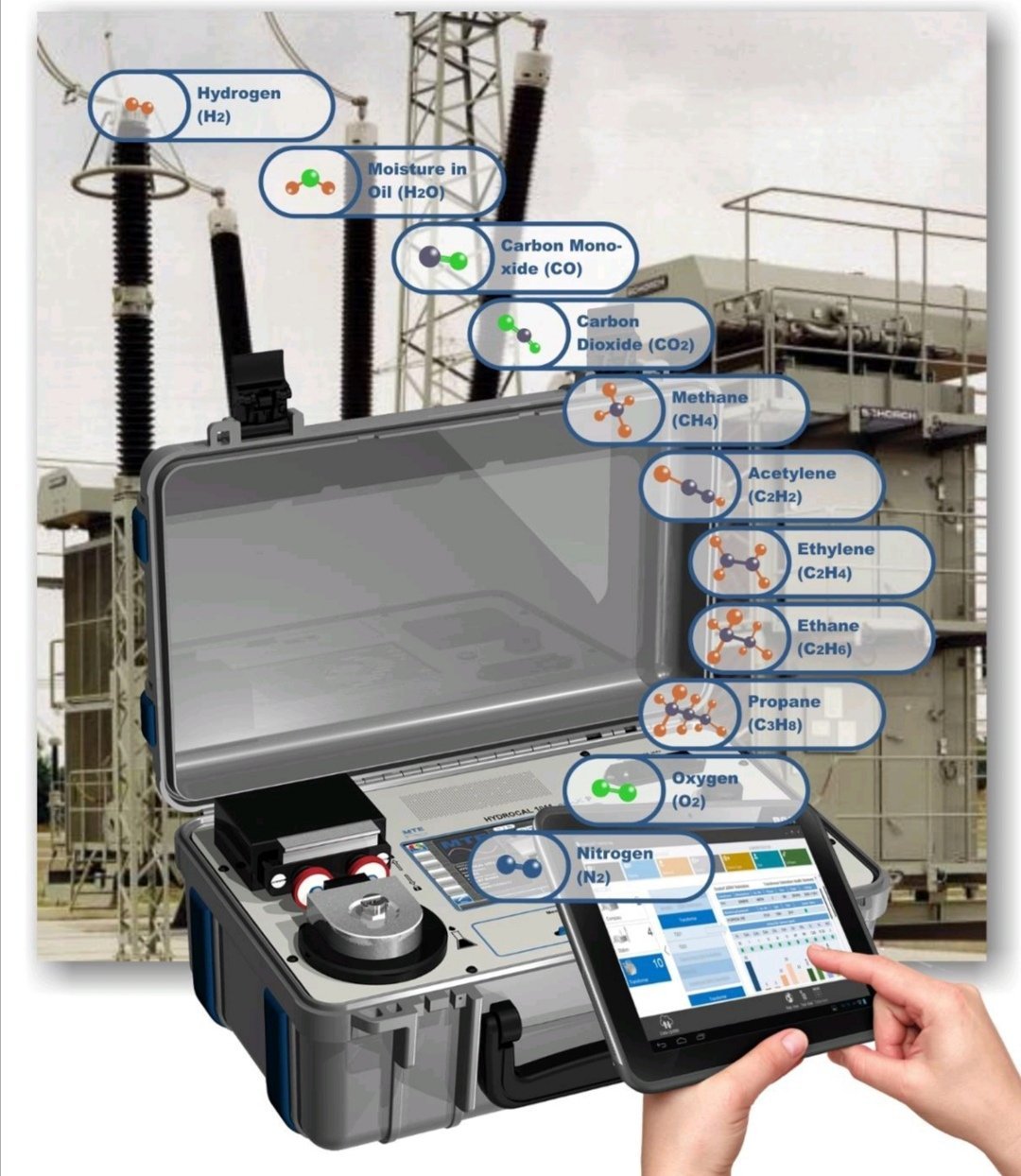When a oil immersed transformer is subjected to internal faults, than due to short circuit flowing through transformer windings, the temperature of windings rises, this give rise to rise in oil temperature. So Transformer oil and winding paper insulation starts decomposing and various gases like Methane, Ethane, Ethylene, Acetylene, Hydrozen etc. are produced due to this decomposition of transformer oil and paper/cellulose insulation as shown in the table below.
These gases are than dissolved in the transformer oil. If you are interested how these gases are produced and at what temperatures , it is given below at the end of article.
| Gas | Chemical formula | Source |
| Nitrogen | N2 | Inert gas blanket, atmosphere |
| Oxygen | O2 | Atmosphere |
| Hydrogen | H2 | Partial discharge |
| Carbon dioxide | CO2 | Overheated cellulose, atmosphere |
| Carbon monoxide | CO | Overheated cellulose, air pollution |
| Methane | CH4 | Overheated oil (hot metal gas) |
| Ethane | C2H6 | Overheated oil |
| Ethylene | C2H4 | Very overheated oil (may have trace of C2H2) |
| Acetylene | C2H2 | Arcing in oil |
Finding out the concentration of various gases in transformer oil is called dissolved gas analysis or gas in oil analysis.
These gases are produced at various temperatures and various conditions of fault. So by knowing this data , we can easily find out type of fault and how severe the fault is ?
This test is done periodically or during maintenance or after fault to know the health or a diagnostic tool for transformer maintenance.
There are two methods for this.
- Online
- Offline
In the online method, tranformer is fitted with a DGA kit or device that checks or monitor the gases in oil in real time continuously and sounds a alarm when abnormality found. Such a online DGA kit is shown below. It can be fitted to valve of transformer.

(Image credit: MTE Meter Test Equipment, Switzerland)
Online method is adopted for large transformer. Normally offline method is used.
So what is the offline method. In the offline method, during maintenance or after fault, oil sample from transformer is collected and than tested in portable DGA test kit or sent to laboratory.
Such a portable DGA test kit is shown below.

(Image credit:MTE Test Equipment, Switzerland)
It is suitcase type with a handle to carry. Oil sample is poured in the extraction chamber(shown below in picture) provided in the DGA test kit and kit gives the concentration of various gases dissolved in oil sample.

(Image credit:MTE Test Equipment, Switzerland)
Production of various gases during fault in transformer
Transformer oil is refined byproduct of petroleum and contains hydrocarbons. during fault in tranformer, short circuit current flows through widing or in turns therby raising the temperature of windings.
Due to this temperature rise of windings, transformer oil also decomposed. some of these hydrocarbons of oil break down into hydrogen plus small hydrocarbon molecules such as, methane, ethane, ethylene, acetylene, propane, and propylene at various temperatures given below.
- Methane, Ethane – below 150°C,
- Ethylene – above 150°C,
- Acetlene – above 600°C,
- Hydrogen – above 1400°C,
Also the kraft paper that are used to insulate transformer windings are made up of cellulose. When temperature of the windings rise during fault , than at high temperatures, cellulose oxidizes to form carbon dioxide (CO2), carbon monoxide (CO) and water (H2O). So high concentrations of CO2 and or CO give indications of overheated windings.
